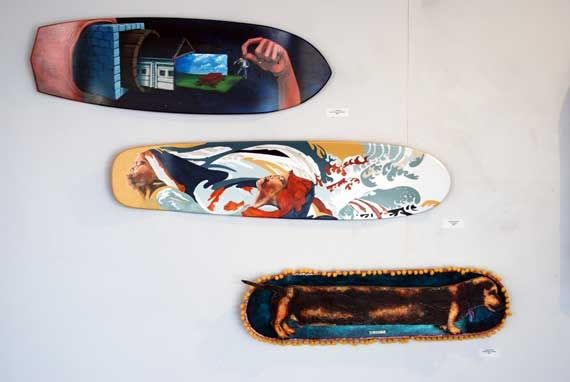|
|
Skateboard Art
|
• The 1940s–1960s
Skateboarding was probably born sometime in the late 1940s or early 1950s when surfers in California wanted something to surf when the waves were flat. No one knows who made the first board; it seems that several people came up with similar ideas at around the same time. These first skateboarders started with wooden boxes or boards with roller skate wheels attached to the bottom. The boxes turned into planks, and eventually companies were producing decks of pressed layers of wood – similar to the skateboard decks of today. During this time, skateboarding was seen as something to do for fun besides surfing, and was therefore often referred to as "Sidewalk Surfing".
The first manufactured skateboards were ordered by a Los Angeles, California surf shop, meant to be used by surfers in their downtime. The shop owner, Bill Richard, made a deal with the Chicago Roller Skate Company to produce sets of skate wheels, which they attached to square wooden boards. Accordingly, skateboarding was originally denoted "sidewalk surfing" and early skaters emulated surfing style and maneuvers. Crate scooters preceded skateboards, and were borne of a similar concept, with the exception of having a wooden crate attached to the nose (front of the board), which formed rudimentary handlebars.
A number of surfing manufacturers such as Makaha started building skateboards that resembled small surfboards, and assembling teams to promote their products. The popularity of skateboarding at this time spawned a national magazine, Skateboarder Magazine, and the 1965 international championships were broadcast on national television. The growth of the sport during this period can also be seen in sales figures for Makaha, which quoted $10 million worth of board sales between 1963 and 1965 (Weyland, 2002:28). Yet by 1966 the sales had dropped significantly (ibid) and Skateboarder Magazine had stopped publication. The popularity of skateboarding dropped and remained low until the early 1970s.
|
|









